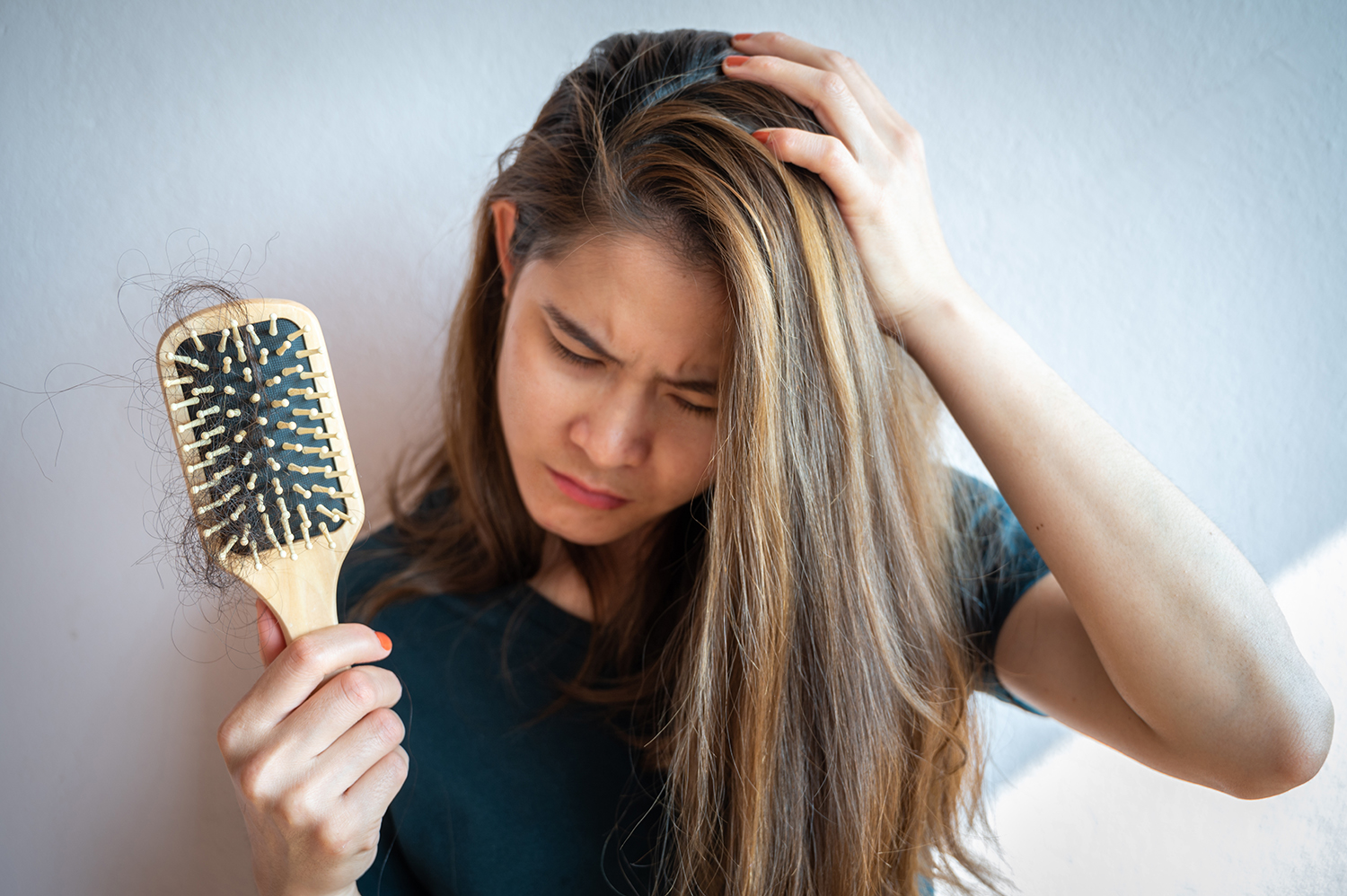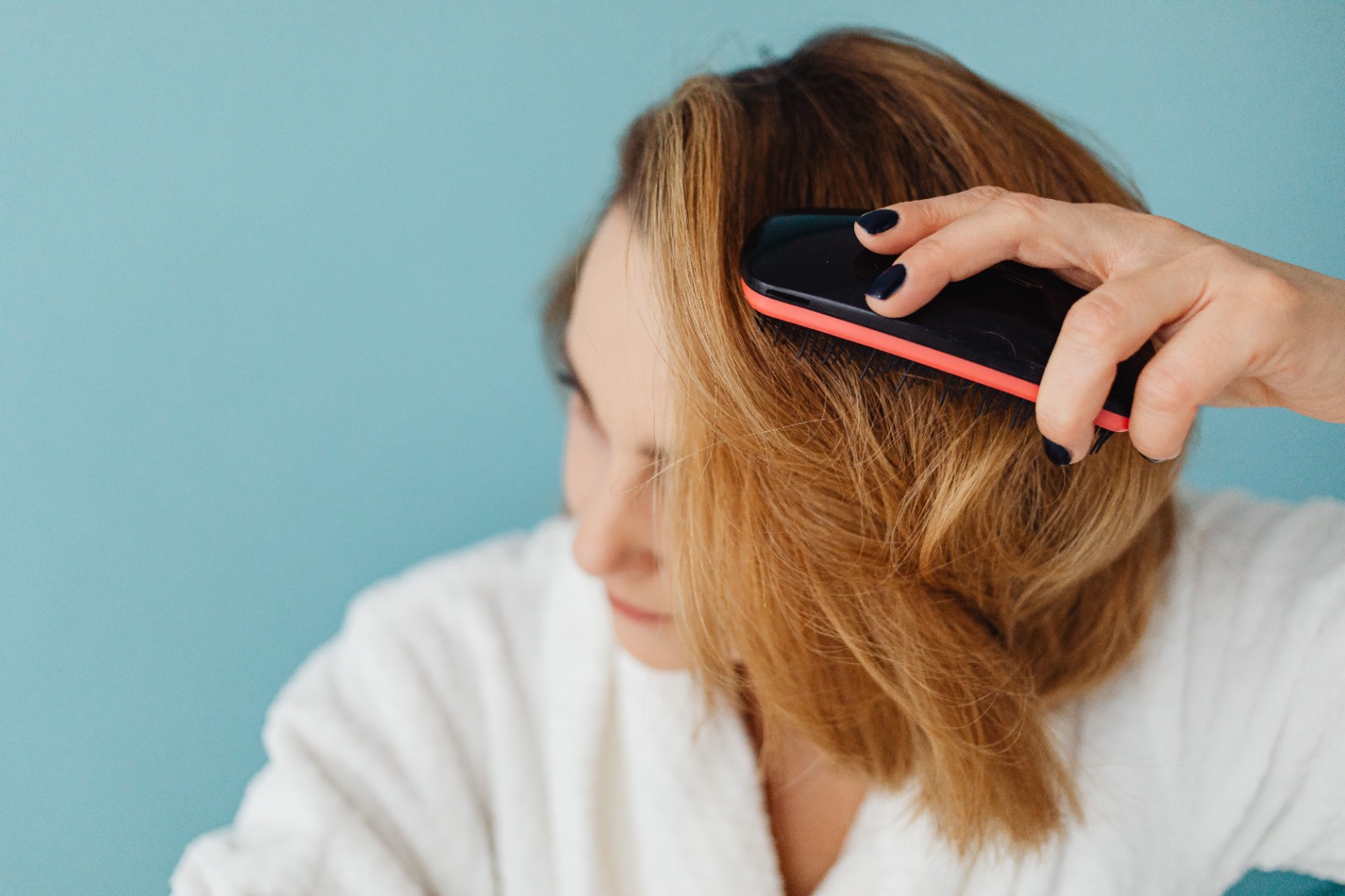Hair Loss
A Guide on how to deal with hair loss
Say goodbye to bad hair days with our expert advice on dealing with hair loss. #hairloss #haircare #hairgrowth #hairtreatment #haircaretips
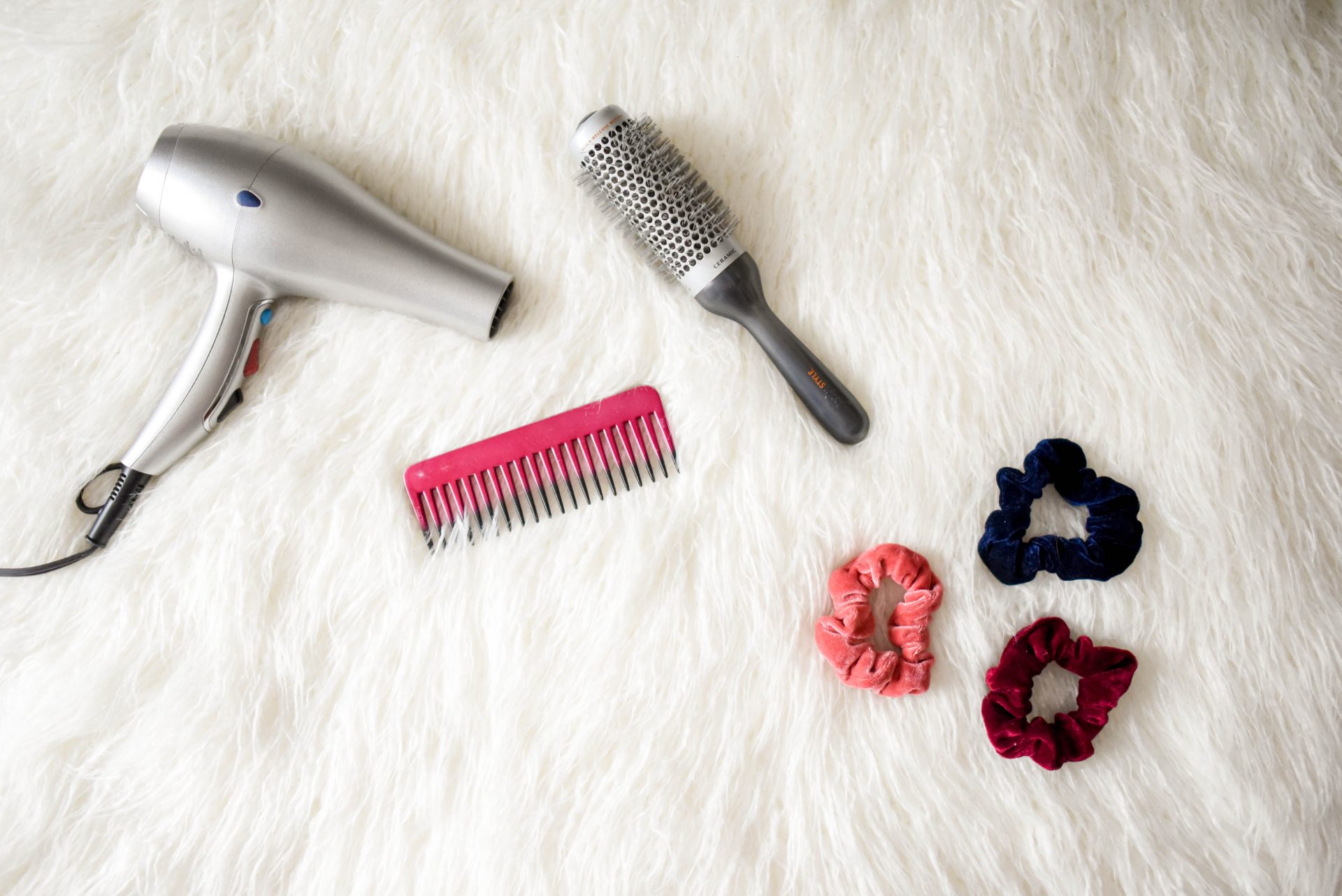
Hair loss, also known as alopecia, is a common condition that affects millions of people worldwide. It can be caused by a variety of factors, including genetics, diet, stress, hormonal changes, and certain medications. While there is no way to completely prevent hair loss, there are steps you can take to manage and treat the condition.
Hair loss can be distressing and frustrating, and it can affect people of all ages and genders. It can range from mild thinning to complete baldness and can be caused by a variety of factors, including genetics, diet, stress, hormonal changes, and certain medications. If you are experiencing hair loss, it is important to identify the underlying cause in order to effectively manage and treat the condition. There are many options available for managing hair loss, including over-the-counter treatments, prescription medications, and surgical procedures. It is also important to find ways to cope with the emotional challenges of hair loss and embrace your appearance. This guide will provide an overview of the causes of hair loss and various treatment options, as well as tips for managing the emotional impact of hair loss.
Identify the cause of your hair loss.
In order to effectively treat hair loss, it is important to first identify the underlying cause. There are several common causes of hair loss, including androgenetic alopecia, telogen effluvium, alopecia areata, anagen effluvium, and trichotillomania.
Androgenetic alopecia
This is the most common cause of hair loss and is also known as male or female pattern baldness. It is caused by the presence of the hormone dihydrotestosterone (DHT), which can shrink the hair follicles and lead to thinning hair and eventual hair loss. Androgenetic alopecia is hereditary, so if you have a family history of hair loss, you may be more prone to this type of hair loss.
Telogen effluvium
This type of hair loss is often caused by physical or emotional stress, such as surgery, childbirth, or severe illness. It can also be triggered by certain medications, such as antidepressants and blood thinners. Telogen effluvium usually resolves on its own once the underlying cause has been addressed.
Alopecia areata
This is an autoimmune disorder that causes hair loss on the scalp, face, and body. It is believed to be caused by a combination of genetic and environmental factors. Alopecia areata can be treated with medications such as corticosteroids or immunotherapy, or with wigs or hairpieces.
Anagen effluvium
This type of hair loss is often caused by chemotherapy or radiation treatment for cancer. It can also be caused by certain medications that affect hair growth, such as retinoids and some blood pressure medications. Anagen effluvium usually resolves once treatment has been completed.
Trichotillomania
This is a disorder in which people pull out their own hair, often as a result of stress or anxiety. Trichotillomania can be treated with therapy, medication, or a combination of both.
Consult a healthcare professional.
If you are experiencing hair loss, it is important to consult a healthcare professional, such as a dermatologist or trichologist. They will be able to assess your hair loss and determine the underlying cause. They may also recommend certain tests, such as a scalp biopsy or blood work, to help diagnose the cause of your hair loss.
Follow a healthy diet.
A healthy diet is important for maintaining healthy hair growth. Make sure to include a variety of nutrients, such as protein, iron, and vitamins A and C, in your diet. Foods that are rich in these nutrients include eggs, lean meats, leafy green vegetables, and citrus fruits. Avoid crash diets or extreme weight loss, as these can lead to hair loss.
Reduce stress.
Stress can contribute to hair loss, so it is important to find ways to manage and reduce stress. Try techniques such as meditation, yoga, or deep breathing to help reduce stress and promote relaxation. You may also want to consider talking to a therapist or counselor about ways to manage stress.
Avoid certain hairstyles.
Tight hairstyles, such as ponytails, cornrows, and braids, can pull on the hair and damage the hair follicles, leading to hair loss. Avoid these hairstyles, or at least wear them loose to reduce the risk of hair loss.
Avoid heat styling.
Heat styling tools, such as hair dryers, flat irons, and curling irons, can damage the hair and lead to hair loss. If you must use heat styling tools, be sure to use a heat protectant spray and keep the heat setting at a moderate level. If possible, try to air dry your hair or use a low heat setting when blow drying your hair.
Use gentle hair care products.
Choose hair care products that are gentle and free of harsh chemicals, such as sulfates and parabens. Avoid using hot water when washing your hair, as this can strip the hair of its natural oils and lead to dry, brittle hair. Instead, use lukewarm water and be sure to rinse your hair thoroughly to remove any excess product.
Try over-the-counter treatments.
There are several over-the-counter treatments that may help to manage hair loss. Minoxidil is a topical treatment that is applied directly to the scalp. It is available in both prescription and non-prescription strength and has been shown to be effective in promoting hair growth. Minoxidil can be used by both men and women and is typically applied twice a day.
Another option is finasteride, which is a prescription medication that is taken orally. It is mainly used to treat male pattern baldness, but may also be effective in women. Finasteride works by inhibiting the production of DHT, which is the hormone that causes hair loss. It is typically taken once a day.
Consider a hair transplant.
If other treatments have not been successful in managing your hair loss, you may want to consider a hair transplant. This surgical procedure involves transplanting hair follicles from a donor site (usually the back of the head) to the area of hair loss. Hair transplants are typically performed using one of two techniques: follicular unit transplantation (FUT) or follicular unit extraction (FUE).
FUT involves removing a strip of hair from the donor site and dividing it into individual follicular units, which are then transplanted to the area of hair loss. FUE involves removing individual follicular units from the donor site using a special tool and then transplanting them to the area of hair loss.
Hair transplants can be effective in restoring hair growth, but they are expensive and can have side effects, such as scarring and infection. It is important to carefully research and consider all of your options before deciding on a hair transplant.
Embrace your hair loss. While it can be difficult to come to terms with hair loss, it is important to remember that it is a natural part of life. Instead of trying to hide your hair loss, embrace it and find ways to feel confident and comfortable with your appearance. This may involve experimenting with different hairstyles or wearing a wig or hairpiece.
There are many resources available for people experiencing hair loss, including support groups and online communities. These can be a great source of support and encouragement as you navigate the challenges of hair loss.
In conclusion
Hair loss can be a distressing and frustrating condition that affects people of all ages and genders. While there is no surefire way to prevent it, there are steps you can take to manage and treat the condition. These include identifying the cause of your hair loss, consulting a healthcare professional, following a healthy diet, reducing stress, avoiding certain hairstyles and heat styling, using gentle hair care products, and trying over-the-counter treatments or hair transplants. It is also important to embrace your hair loss and find ways to feel confident and comfortable with your appearance. This may involve experimenting with different hairstyles or wearing a wig or hairpiece.
If you are experiencing hair loss, it is important to remember that you are not alone and that there are many resources available to help you manage and treat the condition. Don’t be afraid to seek out support from friends, family, or a professional counselor. With the right treatment and self-care, you can successfully manage your hair loss and feel confident and comfortable with your appearance.
Hair Loss
How to Stop Hair Breakage Naturally at Home: A Comprehensive Guide
Revive your locks with our guide on how to stop hair breakage naturally at home! ??♀️ Say goodbye to weak strands and hello to healthy, gorgeous hair. ?✨ #HairCareTips #NaturalHairCare #HairGoals #HealthyHair
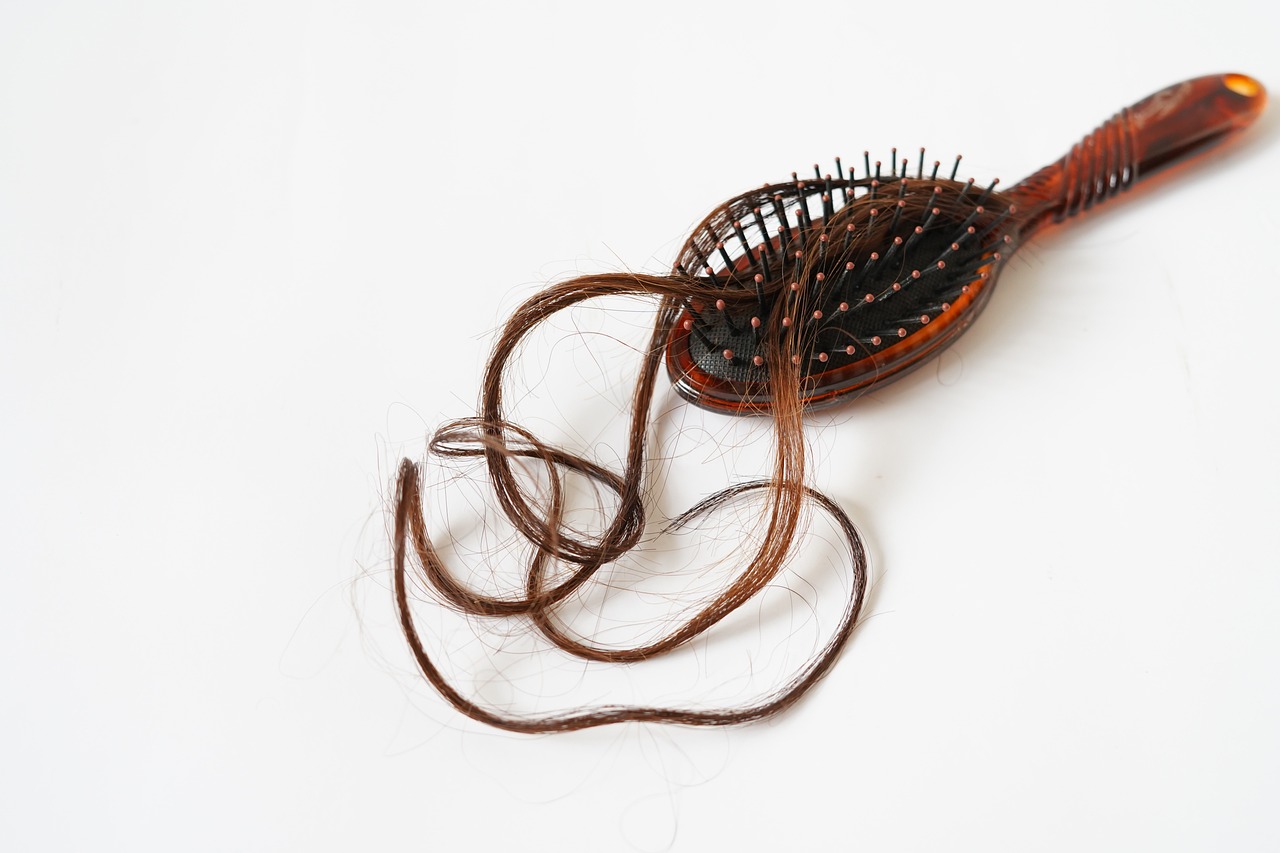
Hair breakage is a common concern for many people, affecting not just the appearance but also the health of our precious locks. While there are numerous treatments and products available in the market claiming to restore and strengthen hair, it’s crucial to consider natural, at-home methods that can effectively prevent hair breakage without causing further damage or side effects. In this comprehensive guide, we will explore the factors contributing to hair breakage, how to stop it naturally, and the best practices to maintain strong, healthy hair. We’ll also address some common questions, such as what to put in your hair to prevent breakage and whether hair breakage grows back. By following the tips and advice provided in this blog post, you’ll be well-equipped to tackle hair breakage head-on and enjoy luscious, resilient tresses.
Understanding Hair Breakage
Before diving into how to stop hair breakage naturally, it’s essential to understand the structure and composition of hair. Hair is primarily made up of a protein called keratin, which forms the hair shaft – the visible part of the hair. The hair shaft consists of three layers: the cuticle, the cortex, and the medulla. The cuticle is the outermost layer made up of overlapping protective cells, while the cortex is the middle layer that provides strength, elasticity, and pigment. The medulla, present in some hairs, is the innermost layer and is less critical for hair health.
Hair breakage occurs when the hair shaft becomes weak and damaged, leading to strands breaking off or splitting. Several factors contribute to hair breakage, such as:
- Excessive heat: Overusing heat-styling tools like flat irons, curling wands, or blow dryers can weaken and damage the hair shaft, making it more susceptible to breakage.
- Chemical treatments: Hair dyes, relaxers, and perms can alter the hair’s structure, causing it to become weaker and more prone to breakage.
- Mechanical damage: Rough handling of hair, like brushing too vigorously or wearing tight hairstyles, can cause stress on the hair shaft, leading to breakage.
- Environmental factors: Exposure to sun, wind, or cold weather can strip the hair of its natural moisture, leaving it dry, brittle, and more likely to break.
Now that we have a better understanding of hair breakage, let’s explore how to stop it naturally at home.
How to Stop Hair Breakage Naturally at Home
Addressing hair breakage requires a combination of lifestyle changes and hair care practices that promote healthy hair. Here are some effective ways to stop hair breakage naturally at home:
- Dietary changes: Your diet plays a significant role in the health of your hair. Consuming foods rich in protein, vitamins, and minerals, such as lean meats, fish, eggs, leafy greens, nuts, and seeds, can provide your hair with the necessary nutrients for strength and growth.
- Deep conditioning with natural oils: Regularly treating your hair with natural oils, such as coconut oil, olive oil, or argan oil, can help restore moisture and strengthen the hair shaft. Apply the oil to your hair, focusing on the ends, and leave it in for at least 30 minutes before washing it out with a gentle shampoo.
- Avoiding heat styling tools and harsh chemicals: Limit your use of heat styling tools and opt for air-drying whenever possible. Additionally, choose hair products free from sulfates, parabens, and other harsh chemicals that can strip your hair of its natural oils and cause damage.
- Properly detangling hair: Instead of using a brush, opt for a wide-tooth comb or your fingers to gently detangle your hair, starting from the ends and working your way up. This helps minimize the risk of hair breakage caused by pulling and tugging.
- Ensuring regular hair trims: Get your hair trimmed every 6-8 weeks to remove split ends and prevent them from traveling up the hair shaft, which can cause further breakage.
By implementing these natural methods, you can effectively prevent hair breakage and maintain stronger, healthier hair.
Natural Treatments for Strengthening Hair
In addition to the practices mentioned above, you can also strengthen your hair by using natural treatments that provide essential nutrients and hydration. Here are some effective options to consider:
- DIY hair masks: Homemade hair masks using natural ingredients can nourish and repair damaged hair. Some popular options include:
- Avocado mask: Mash a ripe avocado and mix it with two tablespoons of olive oil. Apply the mixture to your hair, focusing on the ends, and leave it on for 20-30 minutes before rinsing it out.
- Egg mask: Whisk one or two eggs (depending on your hair length) and apply the mixture to your hair. Leave it on for 20 minutes, then wash it out with cool water and a gentle shampoo.
- Banana and honey mask: Blend a ripe banana with two tablespoons of honey, and apply the mixture to your hair. Leave it on for 20-30 minutes before rinsing it out.
- Herbal rinses: After washing your hair, you can use herbal rinses to add shine, restore pH balance, and reduce breakage. Some options include:
- Tea rinse: Brew a cup of strong black or green tea, allow it to cool, and pour it over your hair after shampooing. Leave it on for a few minutes, then rinse it out with cool water.
- Apple cider vinegar rinse: Mix one part apple cider vinegar with two parts water, and use it as a final rinse after shampooing your hair. This can help seal the cuticles, reduce frizz, and improve shine.
- Scalp massages: Regularly massaging your scalp using your fingertips or a scalp massage brush can help stimulate blood circulation, which in turn promotes hair growth and strengthens the hair follicles. You can also use a few drops of essential oils like lavender, rosemary, or peppermint, mixed with a carrier oil, to enhance the benefits of the massage.
Incorporating these natural treatments into your hair care routine can provide the necessary nourishment and protection to combat hair breakage effectively.
Does Hair Breakage Grow Back?
Many people worry about whether their hair will grow back after experiencing hair breakage. To address this concern, it’s essential to understand the hair growth cycle. Hair grows in three main stages: anagen (growth), catagen (transition), and telogen (resting). The anagen phase typically lasts for 2-7 years, during which your hair grows continuously. After the anagen phase, hair enters the catagen phase, which lasts for 2-3 weeks. Finally, the telogen phase lasts for about three months, during which old hair falls out, making room for new hair to grow.
Hair breakage can be a temporary issue if you take proper care of your hair and address the factors causing the breakage. By adopting a healthy hair care routine and following the tips discussed in this blog post, you can help your hair grow back stronger and healthier.
Here are some tips for stimulating hair growth and maintaining healthy hair:
- Be patient: Hair typically grows about half an inch per month, so it may take time to notice significant changes in your hair’s length and health.
- Maintain a balanced diet: Ensure your diet includes essential nutrients like protein, vitamins A, C, D, and E, biotin, zinc, and iron to support healthy hair growth.
- Limit stress: Chronic stress can negatively impact hair growth. Incorporate stress-reduction techniques like meditation, exercise, or deep breathing into your daily routine.
- Treat your hair gently: Avoid excessive heat styling, chemical treatments, and rough handling of your hair to minimize damage and breakage.
By following these tips, you can encourage hair growth and enjoy healthier, stronger tresses.
Best Practices for Preventing Hair Breakage
Preventing hair breakage involves adopting a comprehensive approach to hair care that focuses on maintaining the overall health of your hair. Here are some best practices to follow:
- Develop a healthy hair care routine: Establish a regular routine that includes shampooing, conditioning, deep conditioning, and using natural treatments like hair masks and herbal rinses. Make sure to choose gentle, sulfate-free products that cater to your hair type and concerns.
- Limit exposure to heat and chemicals: Minimize the use of heat styling tools, and when you must use them, apply a heat protectant spray beforehand. Additionally, avoid harsh chemical treatments like hair dyes, relaxers, or perms, or opt for gentler, more natural alternatives.
- Handle hair gently while washing and styling: Be gentle when shampooing and detangling your hair to prevent unnecessary stress on the hair shaft. Also, avoid rubbing your hair with a towel to dry it; instead, use a microfiber towel or a soft t-shirt to gently squeeze out excess water.
- Consider protective hairstyles: Wearing your hair in protective styles like braids, twists, or buns can help minimize breakage by reducing friction between your hair and clothing, accessories, or other environmental factors. Just make sure not to pull your hair too tight, as this can cause tension and lead to breakage.
By incorporating these best practices into your hair care routine, you can effectively prevent hair breakage and maintain the health and vitality of your tresses. Adopting a proactive approach to hair care will not only help you achieve stronger, more resilient hair but also boost your confidence and overall well-being.
In Conclusion
In conclusion, stopping hair breakage naturally at home involves a combination of understanding the causes of hair breakage, adopting a healthy hair care routine, using natural treatments, and following best practices to prevent further damage. By implementing the tips and advice provided in this comprehensive guide, you can effectively tackle hair breakage and enjoy luscious, resilient tresses. Remember that consistency is key, and it may take some time to see significant improvements in your hair’s health and strength. We encourage you to take action and incorporate these methods into your daily life and don’t forget to share your experiences and successes with the suggested techniques. Embrace the journey towards healthier, stronger hair, and enjoy the benefits of taking care of your hair naturally at home.
Hair Loss
10 Natural Hair Loss Hair Treatment Options for Thinning Hair
Say goodbye to thinning hair and hello to thick, luscious locks! ?♀️ These 10 natural hair loss treatments can help ? #ThickHairGoals #NaturalHairCare
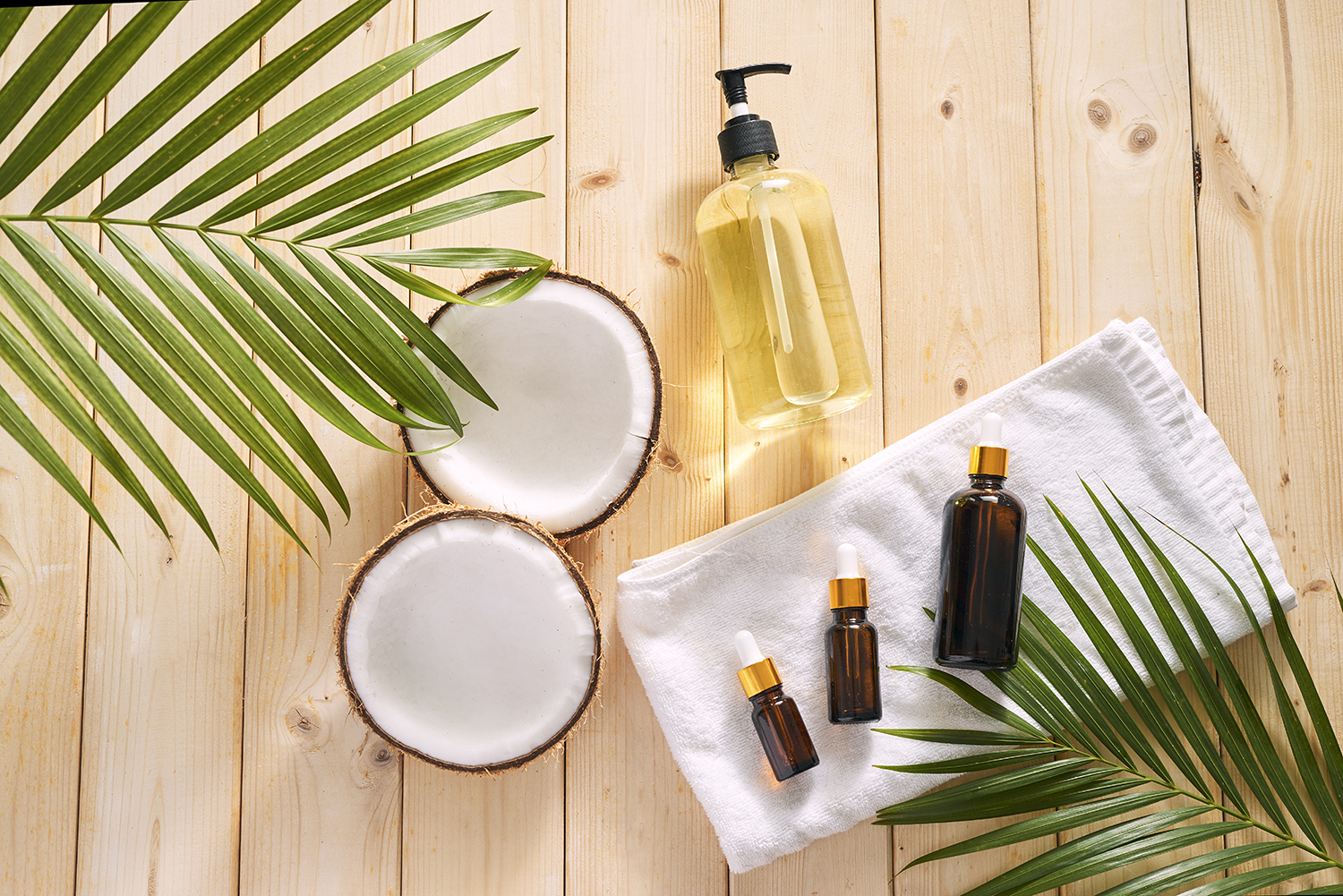
Introduction
Hair loss is a condition that affects people of all ages and genders and can be caused by a variety of factors. From genetics to stress, hormonal changes to nutritional deficiencies, hair loss is a multifaceted problem that can lead to a decrease in self-esteem and confidence. For many people, their hair is an important aspect of their appearance and a symbol of their identity. Losing hair can make them feel less attractive and less like themselves, which can have a negative impact on their mental health and well-being.
Fortunately, there are many treatments and solutions available for those struggling with hair loss. While some people turn to expensive treatments like hair transplants or medications, others prefer natural and holistic approaches that address the underlying causes of hair loss. In this article, we’ll explore a range of natural treatments and lifestyle changes that can help stimulate hair growth and prevent further hair loss. Whether you’re looking to regrow thinning hair or simply want to promote overall hair health, the information in this article will help you understand the best ways to combat hair loss and keep your hair looking and feeling its best.
Can hair grow back after loss?
Hair loss can be caused by a variety of factors, including genetics, stress, hormonal changes, and lifestyle habits such as poor nutrition, smoking, and excessive heat styling. While some types of hair loss may be permanent, many are temporary and can be treated with the right combination of therapies.
Understanding the hair growth cycle is key to understanding how hair loss and regrowth work. Hair grows in a cycle that includes three stages: the anagen phase (growth), the catagen phase (transition), and the telogen phase (resting). During the telogen phase, hair falls out naturally as new hair begins to grow in the anagen phase. However, when this cycle is disrupted, hair may fall out faster than it can be replaced, leading to thinning and baldness.
While some types of hair loss may require medical intervention, there are natural treatments and lifestyle changes that can help stimulate hair growth and prevent further hair loss. These include improving your diet, reducing stress, avoiding harsh styling practices, and using natural hair treatments such as essential oils, scalp massage, and herbal supplements. Seeking medical advice from a qualified dermatologist or hair loss specialist can also be helpful, as they can recommend treatments such as topical medications, oral supplements, or hair restoration procedures that may help promote hair growth.
Overall, while hair loss can be a frustrating and distressing experience, it’s important to remember that there are many ways to treat it and promote healthy hair growth. By understanding the underlying causes of your hair loss and taking action to address them, you can take steps towards regaining your confidence and feeling your best.
How to stop hair loss and regrow hair naturally
If you’re struggling with hair loss, there are many natural remedies that can help you stop hair loss and promote hair regrowth. Here are some of the most effective natural remedies for hair loss:
Improve your diet
Eating a balanced diet rich in vitamins and minerals can help promote healthy hair growth. Foods that are high in protein, iron, biotin, and vitamin C are particularly beneficial for hair health. Some examples include eggs, nuts, spinach, and citrus fruits.
Try scalp massages
Massaging your scalp can help increase blood flow and promote hair growth. Use your fingers to gently massage your scalp for a few minutes each day.
Use essential oils
Essential oils such as rosemary, peppermint, and lavender have been shown to promote hair growth. Mix a few drops of your preferred oil with a carrier oil such as coconut or jojoba oil and massage into your scalp.
Reduce stress
Stress can contribute to hair loss, so finding ways to manage stress is important for hair health. Meditation, yoga, and deep breathing exercises are all effective stress-reducing techniques.
Avoid harsh hair treatments
Chemical treatments, excessive heat styling, and tight hairstyles can all contribute to hair loss. Limiting or avoiding these practices can help promote healthy hair growth.
By incorporating these natural remedies into your hair care routine, you can help stop hair loss and promote healthy hair growth. Keep in mind that it may take time to see results, so be patient and consistent in your efforts.
Vitamins and supplements for hair loss
If you’re looking for a way to boost hair growth and prevent hair loss, certain vitamins, and supplements can be particularly helpful. Here are some of the most effective vitamins and supplements for hair health:
Biotin
Biotin, also known as vitamin H, is a B vitamin that is essential for healthy hair growth. It helps produce keratin, a protein that makes up the structure of hair, and can also help prevent hair breakage. You can find biotin in foods such as eggs, almonds, and sweet potatoes, or take a biotin supplement.
Vitamin D
Vitamin D is important for many aspects of health, including hair growth. Studies have shown that people with hair loss are often deficient in vitamin D. You can get vitamin D from sun exposure or through supplements.
Iron
Iron is important for healthy hair growth because it helps deliver oxygen to hair follicles. A lack of iron can contribute to hair loss, so it’s important to make sure you’re getting enough iron in your diet. Foods such as red meat, spinach, and lentils are good sources of iron.
Omega-3 fatty acids
Omega-3 fatty acids, found in foods such as fatty fish and flaxseed, can help reduce inflammation in the body, which can contribute to hair loss. They can also help keep hair shiny and strong.
By incorporating these vitamins and supplements into your diet, you can help promote healthy hair growth and prevent hair loss. Talk to your healthcare provider before starting any new supplements to make sure they are safe and appropriate for you.
Lifestyle changes to stimulate hair growth
In addition to natural remedies and supplements, there are a number of lifestyle changes you can make to promote healthy hair growth. Here are some tips to consider:
Reduce stress
Stress can have a negative impact on many aspects of health, including hair growth. When you’re stressed, your body produces cortisol, which can interfere with hair follicle growth. To reduce stress, consider practicing relaxation techniques such as meditation or yoga.
Get enough sleep
Sleep is essential for healthy hair growth, as it is during this time that the body repairs and rejuvenates itself. Make sure you’re getting at least 7-8 hours of sleep per night to support hair growth.
Exercise regularly
Regular exercise can help improve circulation, which is important for delivering nutrients and oxygen to hair follicles. It can also help reduce stress and improve overall health.
Avoid harsh styling practices
Certain hairstyles and treatments, such as tight braids or chemical processing, can damage hair and contribute to hair loss. Consider gentler styling practices, such as air-drying hair and using heat tools sparingly.
By making these lifestyle changes, you can support healthy hair growth and prevent hair loss. Start by incorporating small changes into your routine, and gradually build on them over time for the best results.
Best practices for thinning hair
If you’re experiencing thinning hair, it’s important to take special care when choosing hair products and styling techniques. Here are some tips for caring for thinning hair:
Choose the right products
Look for hair products that are specifically formulated for thinning hair, as these will be gentler and less likely to cause further damage. Avoid using products that contain harsh chemicals, such as sulfates or parabens, as these can strip the hair of its natural oils and lead to breakage.
Avoid damaging styling techniques
Certain hairstyles and styling techniques can be particularly damaging for thinning hair. For example, tight braids or ponytails can put stress on the hair follicles and lead to breakage. Instead, opt for looser styles that are less likely to cause damage.
Protect your hair from the elements
Exposure to the sun, wind, and cold can all damage hair and contribute to hair loss. To protect your hair, wear a hat or scarf when spending time outdoors, and use a leave-in conditioner to help protect your hair from the elements.
By following these best practices, you can help protect your thinning hair and prevent further damage. Remember to be gentle with your hair, avoid harsh chemicals and styling techniques, and protect your hair from the elements for the best results.
Foods to prevent hair fall
Eating a healthy diet is essential for healthy hair growth. Here are some of the best foods to include in your diet to prevent hair fall:
Fruits and vegetables
Fruits and vegetables are packed with vitamins and minerals that are essential for healthy hair growth. In particular, foods that are high in vitamin C, such as citrus fruits, berries, and leafy greens, can help strengthen hair and prevent breakage.
Protein-rich foods
Hair is made up of a protein called keratin, so it’s important to include plenty of protein in your diet. Foods such as eggs, fish, and lean meats are excellent sources of protein and can help promote healthy hair growth.
Nuts and seeds
Nuts and seeds are rich in vitamins and minerals that are essential for healthy hair, such as vitamin E and zinc. Almonds, walnuts, and pumpkin seeds are all great choices for promoting hair growth.
Whole grains
Whole grains are an excellent source of biotin, a B vitamin that is essential for healthy hair growth. Foods such as whole-grain bread, oatmeal, and brown rice are all great choices for promoting healthy hair.
By including these foods in your diet, you can promote healthy hair growth and prevent hair fall. Remember to eat a balanced diet that includes plenty of fruits, vegetables, and protein-rich foods for the best results.
Health issues and hair loss
Hair loss can be caused by a variety of health issues. Here are some common conditions that can contribute to hair loss:
Thyroid disorders
Both hyperthyroidism and hypothyroidism can cause hair loss. If you suspect that you have a thyroid disorder, it’s important to see a healthcare provider for diagnosis and treatment.
Anemia
Anemia is a condition in which there is a deficiency of red blood cells in the body. This can cause hair loss, as well as other symptoms such as fatigue and weakness. If you have anemia, your healthcare provider may recommend iron supplements or dietary changes to help manage the condition.
Autoimmune diseases
Autoimmune diseases such as lupus and alopecia areata can cause hair loss. Treatment for these conditions may include medications and lifestyle changes.
If you suspect that you have a health condition that is contributing to your hair loss, it’s important to see a healthcare provider for diagnosis and treatment. By managing these conditions, you can prevent further hair loss and promote healthy hair growth.
The best shampoos for hair fall
Choosing the right shampoo is an important part of preventing hair fall and promoting healthy hair growth. Here are some of the best shampoos for addressing hair fall:
Nizoral A-D Anti-Dandruff Shampoo
This shampoo contains ketoconazole, an antifungal medication that can help to reduce inflammation and promote hair growth.
Hair Restoration Laboratories DHT Blocking Hair Loss Shampoo
This shampoo contains ingredients like saw palmetto and caffeine, which can help to block the hormone DHT, a common cause of hair loss.
PURA D’OR Original Gold Label Anti-Thinning Shampoo
This shampoo contains a variety of natural ingredients that can help to nourish the scalp and promote healthy hair growth, including biotin, argan oil, and nettle extract.
When choosing a shampoo for hair fall, look for products that contain ingredients like biotin, saw palmetto, and caffeine, which is known for their ability to promote hair growth. It’s also important to choose a shampoo that is appropriate for your hair type, whether you have dry, oily, or normal hair. By choosing the right shampoo, you can help to prevent hair fall and promote healthy hair growth.


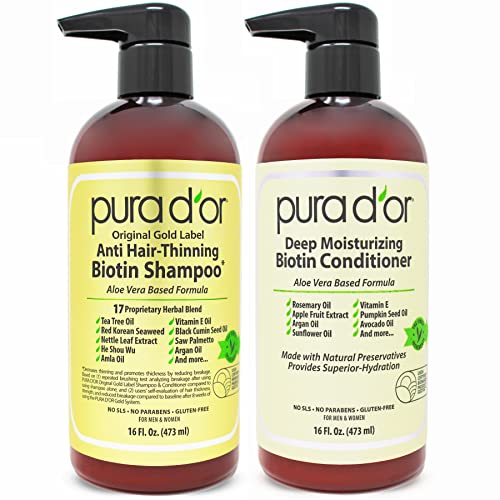
In Conclusion
To recap, the article has provided an overview of various factors that contribute to hair loss and the ways to promote hair growth and prevent further hair loss naturally. The article has discussed the importance of taking care of your overall health and lifestyle habits that promote healthy hair growth, such as reducing stress, getting enough sleep, and exercising regularly. It has also discussed the role of specific vitamins and supplements in promoting hair growth, and the best foods to incorporate into your diet to prevent hair fall.
The article has also provided advice on the best hair care practices to protect your hair from damage and prevent hair loss. This includes choosing the right hair care products, avoiding harsh styling techniques, and protecting your hair from environmental factors such as the sun, wind, and pollution.
In conclusion, while hair loss can be a frustrating and distressing issue, there are many ways to promote healthy hair growth and prevent further hair loss naturally. By making changes to your lifestyle, diet, and hair care routine, you can achieve healthy and beautiful hair. However, it’s important to remember that severe hair loss can be a sign of underlying medical conditions, and seeking professional advice is always recommended.
Frequently Asked Questions (FAQs)
If you still have questions about hair loss and hair treatment, check out these frequently asked questions:
Q: Why is my hair so thin that I can see my scalp?
A: Hair thinning can be caused by a variety of factors, including genetics, stress, hormonal changes, and nutritional deficiencies. It’s important to determine the underlying cause of your hair loss in order to find the most effective treatment.
Q: What hormone causes hair loss in females?
A: The hormone dihydrotestosterone (DHT) is a common cause of hair loss in females. DHT binds to hair follicles and can cause them to shrink, leading to hair thinning and loss.
Q: Can thin hair become thick again?
A: Depending on the underlying cause of hair loss, it may be possible to regrow hair and improve its thickness. However, it’s important to address the root cause of hair loss and use effective treatments to promote healthy hair growth.
Q: What illnesses cause hair loss in females?
A: Some illnesses that can cause hair loss in females include thyroid disorders, autoimmune diseases, and certain skin conditions. If you’re experiencing hair loss along with other symptoms, it’s important to talk to your healthcare provider.
Q: How much biotin should I take for hair growth?
A: The recommended daily intake of biotin is 30 micrograms for adults. However, some studies suggest that higher doses of biotin (up to 5,000 micrograms per day) may be beneficial for promoting hair growth.
Q: Which food has biotin?
A: Biotin can be found in a variety of foods, including eggs, nuts, seeds, and leafy green vegetables.
Q: How much vitamin B12 should I take daily for hair growth?
A: The recommended daily intake of vitamin B12 is 2.4 micrograms for adults. While vitamin B12 deficiency can contribute to hair loss, taking high doses of the vitamin is unlikely to promote hair growth unless you have a deficiency. It’s important to talk to your healthcare provider before taking any supplements.
References:
- Ablon, G. (2018). A Double-blind, Placebo-controlled Study Evaluating the Efficacy of an Oral Supplement in Women with Self-perceived Thinning Hair. The Journal of clinical and aesthetic dermatology, 11(4), 28–34.
- American Academy of Dermatology. (n.d.). Hair loss: Diagnosis, treatment, and outcome. Retrieved from https://www.aad.org/public/diseases/hair-loss/diagnosis-treatment\
- Harvard Health Publishing. (2018, April 18). Treating female pattern hair loss. Retrieved from https://www.health.harvard.edu/staying-healthy/treating-female-pattern-hair-loss
- Medical News Today. (2018, November 27). What are the best foods for healthy hair? Retrieved from https://www.medicalnewstoday.com/articles/322961
- National Institute of Arthritis and Musculoskeletal and Skin Diseases. (2017, August). Alopecia areata. Retrieved from https://www.niams.nih.gov/health-topics/alopecia-areata
- University of Maryland Medical Center. (2019, July 8). Biotin. Retrieved from https://www.umm.edu/health/medical/altmed/supplement/biotin
Hair Loss
Does tying your hair damage it?
Tight hairstyles may look chic, but are they doing more harm than good? #haircare #tightstyles#hairdamage #hairloss #protectyourhair #scalphealth #hairstyletips
Does tying your hair damage it?
Yes, Tying your hair tightly can cause damage to the hair shaft and hair follicles. Tight hairstyles, such as ponytails, buns, or braids can cause hair breakage, can pull on the hair, and cause breakage, especially if the hair is wet or fragile. Tight hairstyles can also lead to a condition called traction alopecia, which is hair loss that is caused by damage to the hair follicles from tight hairstyles. If you wear tight hairstyles regularly, it is important to take breaks and give your hair a chance to rest. If you have fine or fragile hair, you may also want to consider using products that help to protect the hair from damage, such as leave-in conditioners or oils.


